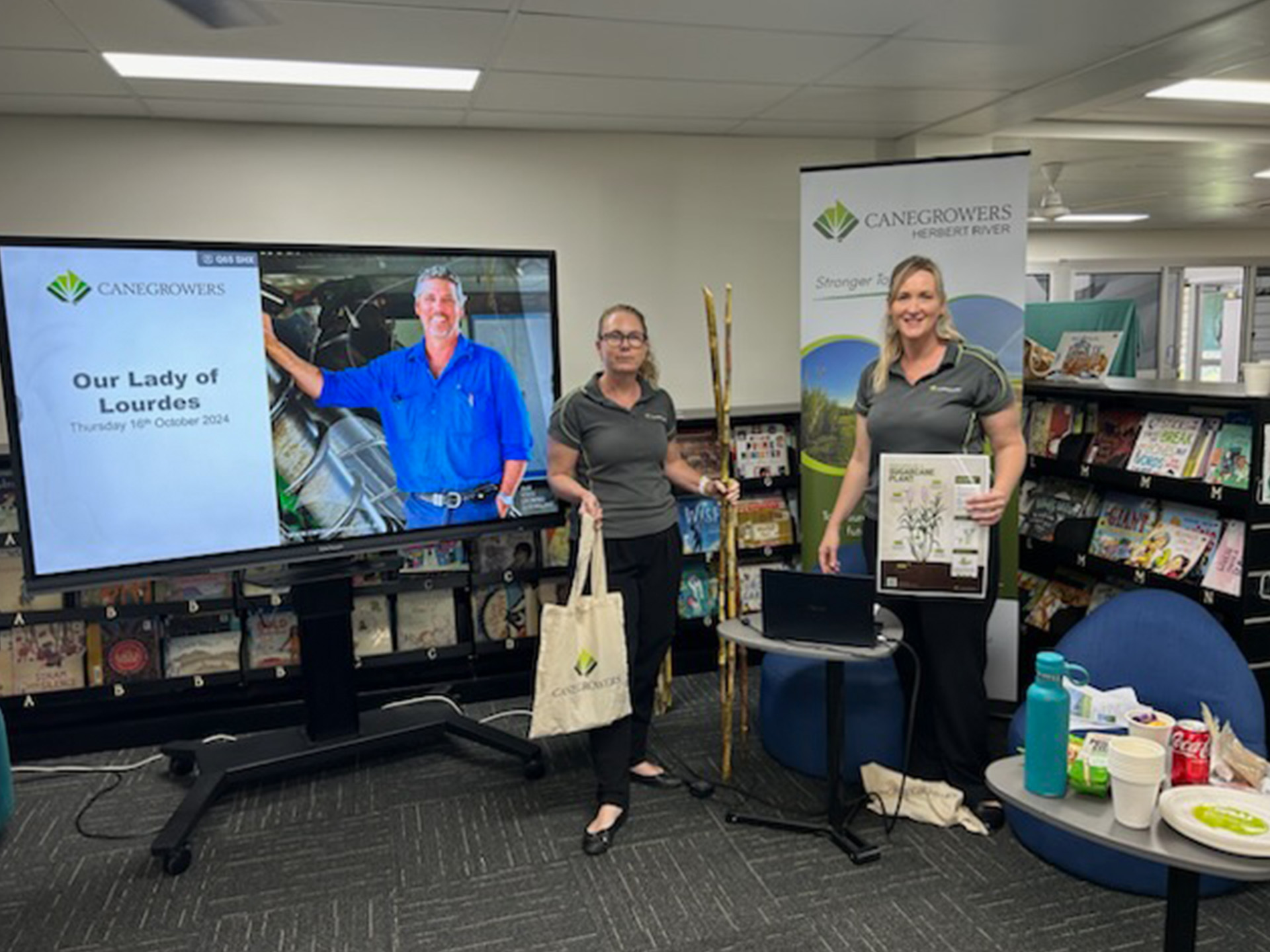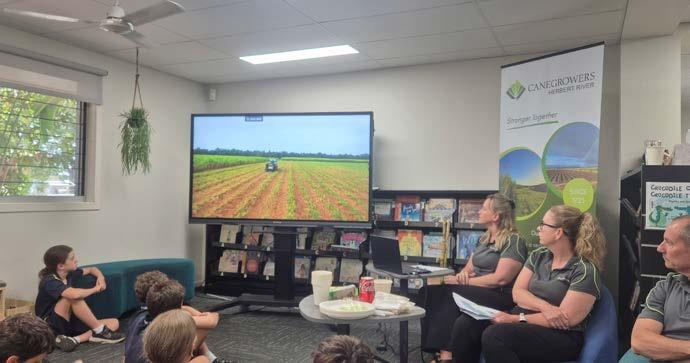
2 minute read
Sharing the sugarcane story
Directors from CANEGROWERS Herbert River visited Our Lady of Lourdes last month, a primary school in Ingham, to support Year 6 students in their Design Technology unit on the sugarcane industry.
The unit, Prime Zone: Sugarcane: One Plant, Many Products – Cane, created by CANEGROWERS , offers a comprehensive look at the industry’s processes and products.
The school’s teaching staff invited CANEGROWERS Herbert River to help broaden the students’ understanding, with a particular focus on technology and by-products.

Directors Paul Marbelli, Zenan Reinaudo, and Leah Russo led sessions with two Year 6 classes, sharing their expertise and insights into the industry.
Students eagerly participated, showing great interest in learning about sugarcane production. The curriculum, enriched by the directors’ hands-on knowledge, served as a valuable resource for teachers to integrate into their lessons. Students explored the journey of sugarcane, from paddock to export, and discovered why Australia exports raw sugar.
The visit included hands-on experiences where students interacted with cane sticks, observed how a refractometer measures sugar levels, and learned about various refined sugar types.

They also explored by-products like sustainable aviation fuel, biodiesel, plastics, hand sanitizer, sugarcane mulch, bagasse, and molasses.
Additionally, they learned about advanced technologies used in the industry, such as GPS systems, drones, smartphones, and blockchain technology.
In Ingham, many students have connections to the sugarcane industry, but their knowledge varies. This initiative helps ensure that students gain a deeper understanding of the industry’s impact both locally and globally, enriching their learning and appreciation for the essential role it plays in their community.






